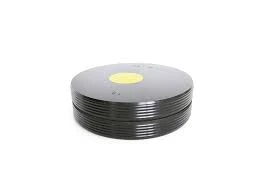Mobile:+86-311-808-126-83
Email:info@ydcastings.com
Motorized Fan with Advanced Impeller Technology for Enhanced Airflow Efficiency
The Role and Innovation of Motorized Impeller Fans
In the realm of mechanical engineering and HVAC (Heating, Ventilation, and Air Conditioning) systems, one of the pivotal advancements has been the development of motorized impeller fans. These fans have transformed how air is circulated in various applications, ranging from industrial settings to residential spaces. This article delves into the characteristics, advantages, and applications of motorized impeller fans, highlighting their significant role in modern technology.
Understanding Motorized Impeller Fans
Motorized impeller fans operate using a rotating impeller, which is a mechanical component consisting of blades and a disc. When the motor drives the impeller, it creates a pressure differential that draws air into the fan and expulses it in a specific direction. This mechanism is distinguished by its efficiency and ability to handle substantial volumes of air. The design can vary considerably, with options like axial fans, centrifugal fans, and mixed-flow fans, each suited for different environments and applications.
Advantages of Motorized Impeller Fans
1. High Efficiency One of the key benefits of motorized impeller fans is their energy efficiency. These fans are designed to maximize airflow while minimizing power consumption. This efficiency makes them ideal for applications requiring continuous operation, such as in manufacturing plants or data centers.
2. Versatility in Applications Motorized impeller fans can be found in an array of settings. They are used in personal cooling devices, HVAC systems, exhaust systems in kitchens, and air handling units in large buildings. Their versatile nature allows them to meet the demand for both low and high-pressure applications effectively.
3. Compact Design The compactness of motorized impeller fans means that they can be installed in spaces with limited real estate. Their small footprint allows for installation in both tight industrial environments as well as in residential settings without sacrificing performance.
4. Noise Reduction Advances in technology have led to quieter motor designs and blade shapes, making modern motorized impeller fans significantly quieter than traditional fans. This feature enhances comfort in environments like offices, homes, and hospitals, where noise levels must be controlled.
motorized impeller fan

5. Enhanced Control Many modern motorized impeller fans come equipped with smart controls that allow users to adjust speed and airflow based on specific needs. This adaptability not only helps in maintaining comfort but also plays a crucial role in energy savings.
Applications in Various Industries
Motorized impeller fans are employed across a multitude of industries, illustrating their immense versatility
- HVAC Systems These fans ensure consistent air distribution and temperature regulation in residential and commercial buildings, contributing to energy savings and occupant comfort. - Industrial Use In factories, motorized impeller fans are utilized for cooling machinery, exhausting airborne contaminants, and ensuring that a safe and compliant working environment is maintained.
- Electronics Cooling Data centers and electronics manufacturing facilities employ these fans to dissipate heat from equipment, preventing overheating and ensuring optimal performance.
- Transportation In the automotive and aerospace industries, motorized impeller fans are vital for maintaining airflow, cooling engines, and enhancing passenger comfort.
Conclusion
Motorized impeller fans represent a remarkable intersection of functionality, efficiency, and innovation. Their ability to provide effective air circulation in a wide range of applications underscores their importance across various industries. As technology continues to advance, the evolution of motorized impeller fans will likely lead to even more efficient designs, integrating smart technology and further enhancing their operational capabilities. In a world where energy conservation and environmental concerns are paramount, the significance of these fans cannot be overstated, making them an essential component of modern engineering solutions.
-
Why Should You Invest in Superior Pump Castings for Your Equipment?NewsJun.09,2025
-
Unlock Performance Potential with Stainless Impellers and Aluminum End CapsNewsJun.09,2025
-
Revolutionize Your Machinery with Superior Cast Iron and Aluminum ComponentsNewsJun.09,2025
-
Revolutionize Fluid Dynamics with Premium Pump ComponentsNewsJun.09,2025
-
Optimizing Industrial Systems with Essential Valve ComponentsNewsJun.09,2025
-
Elevate Grid Efficiency with High-Precision Power CastingsNewsJun.09,2025











